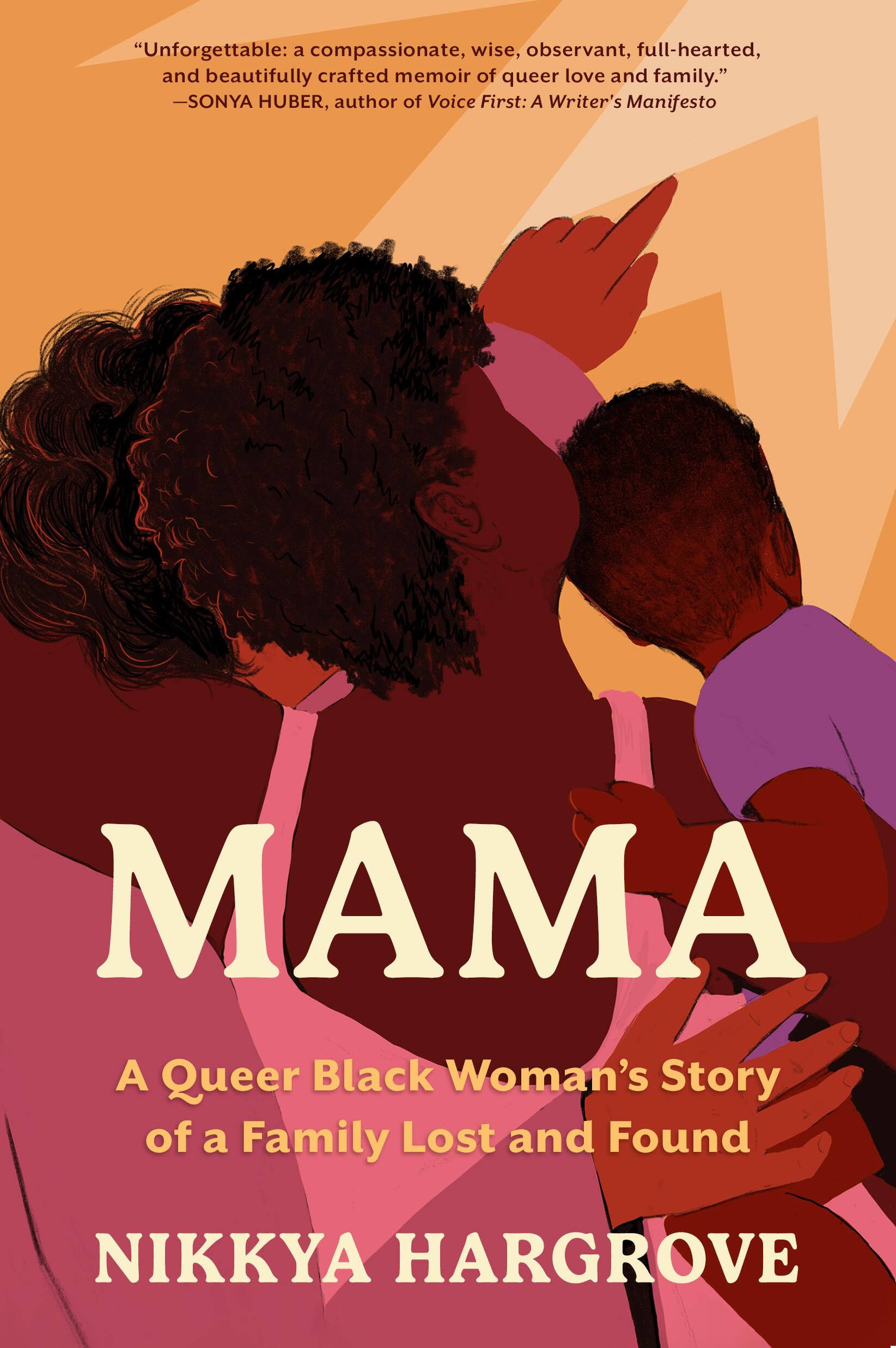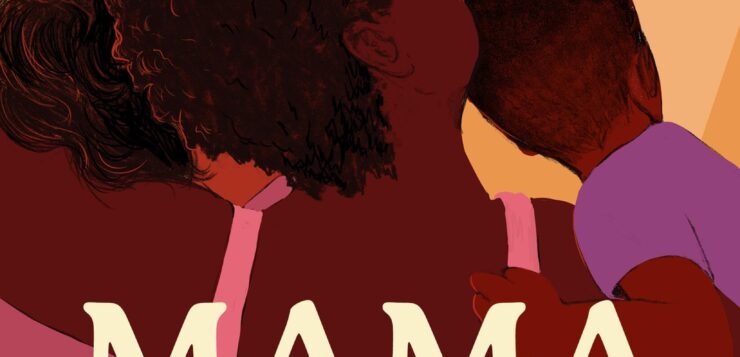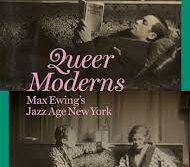
MAMA
A Queer Black Woman’s Story of a Family Lost and Found
by Nikkya Hargrove
Algonquin Books. 228 pages, $29.
IN THE PROLOGUE to Nikkya Hargrove’s compelling memoir, readers learn that Hargrove’s mother’s nickname for her is “Mama,” which explains the book’s main title. The subtitle provides additional information about who Mama is and foreshadows narrative developments though the book, which explores what it means for a family to be “lost” or “found.”
While the book opens with the fourteen-year-old narrator and her family visiting her mother Lisa Eleazer in prison, the main narrative begins ten years later with the birth of Jonathan, Eleazer’s fourth child, born prematurely and testing positive for drugs. Four months later, Hargrove’s mother is found dead in a halfway house at the age of 42 while still on parole. Her cause of death is chronic heart disease. Although the action of much of the memoir focuses on Hargrove’s struggles to establish a stable home for her half-brother and herself, the writer’s relationship with her mother haunts the narrative. We learn of moments of tenderness, such as when Eleazor places her child-daughter between her legs and does her hair. On Hargrove’s 25th birthday, her mother babysits her brother so that her daughter can go out to celebrate. A striking show of support occurs when Hargrove comes out in eighth grade to some members of her homophobic family. In this moment, her mother breaks the shocked silence by declaring, “Mama, I will love you and will always love you, no matter what. … You’re my daughter and I’ll be by your side forever.” (Later in the book, Hargrove mentions coming out at age fifteen.) Other scenes of Eleazer’s nurturing and care are presented sparingly, providing a glimpse of the unrealized promise that marks this mother-daughter relationship. Nevertheless, Eleazor’s presence still hovers several years after her death, as Hargrove prepares for her wedding and wonders what flowers her mother would have chosen. While motherhood is examined from different perspectives throughout, in the second two parts of the book the emphasis on the “found” family emerges, and oppositional forces come into play. As Hargrove fights to gain custody of Jonathan, the shortcomings of the legal system are exposed. The failings of Child Protective Services are highlighted by the agency’s inadequate response to the reappearance and sudden demands of Jonathan’s biological father. The revelation that Jonathan’s troubles at school are caused by his autism point to a deficiency in the education system. Anti-lesbian prejudice surfaces when Hargrove and her wife invite Jonathan’s classmates to a birthday party and none of them attend. Chosen family members form an important part of Hargrove’s “found” family. Hair stylist Perry encourages Hargrove to start dating after she breaks up with her privileged white lover. Hargrove’s former classmate at Bard, Lauren, willingly babysits Jonathan as Hargrove goes on dates. Lauren also offers ongoing support in other ways, like accompanying her on an eight-hour drive to pick up Jonathan from the author’s grandparents’ house in Virginia. Much space is devoted to Dinushka, Hargrove’s Sri Lankan partner and later wife, a figure who willingly undertakes and ultimately embraces the challenges of queer co-parenting. Possibly mirroring the nature of memory, chronological discontinuity is a prominent feature of the book, though the writer peppers her account with dates and ages of participants to ground us. She also intersperses the piece with historical and sociological statistics to establish a national context. Despite the riveting subject matter, this loose structure occasionally presents narrative difficulties for the reader. A character is mentioned at one point and then introduced again twenty pages later; sometimes apartment locations can be confusing. Language use also disappoints at times. Characters “smile from ear to ear” and “straw breaks the camel’s back” on several occasions. One frustrating distraction is the repeated description of characters as being “always there.” Always where? That said, Mama provides an unflinching look at the difficult circumstance of a Black family in struggle and of a young woman’s efforts to care for her half-brother in the midst of it all. Intensely dramatic events occur, but the intrepid author navigates through it all with honesty, authenticity, and the support of her friends and loved ones. The epilogue reports that Hargrove and Dinushka are now a family of five, having added twin girls to their household after the events recounted in the memoir. If Nikkya Hargrove chooses to write a sequel, this reader will eagerly pick up a copy. _______________________________________________________





